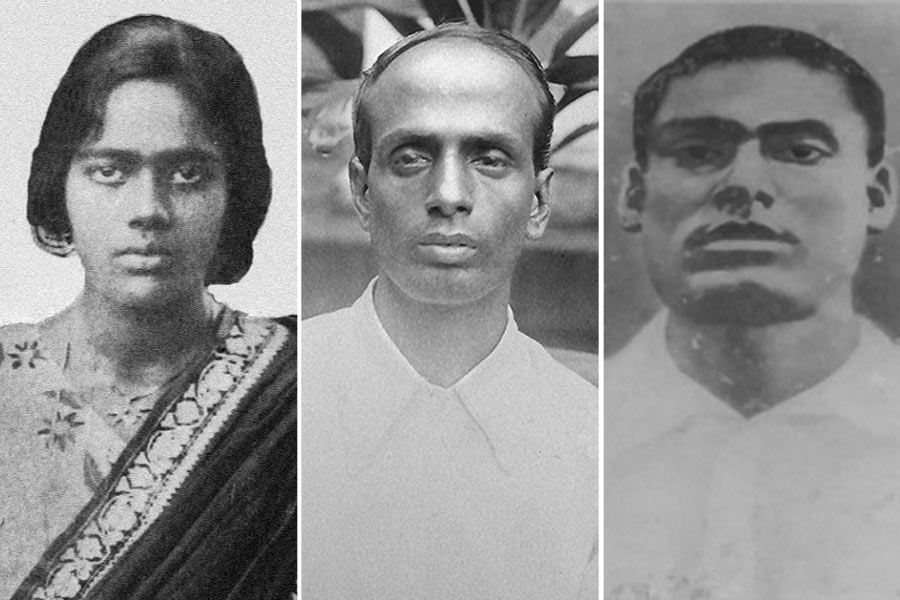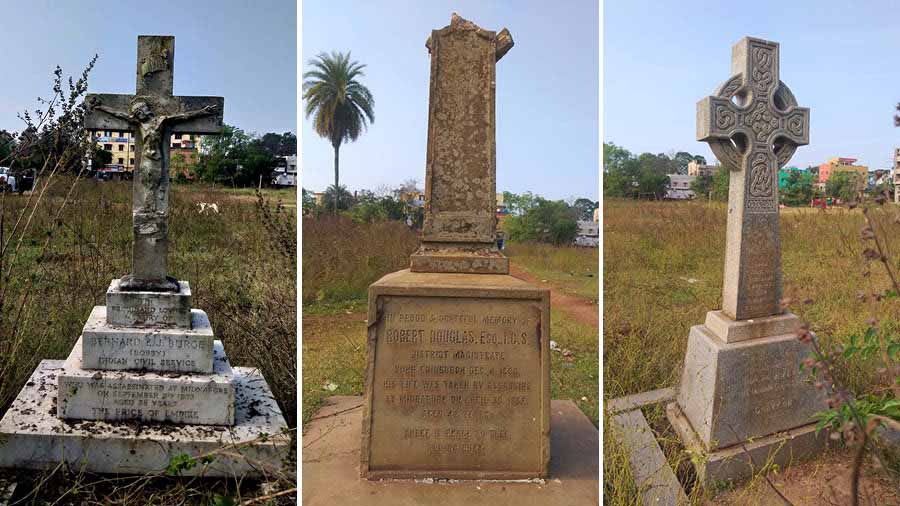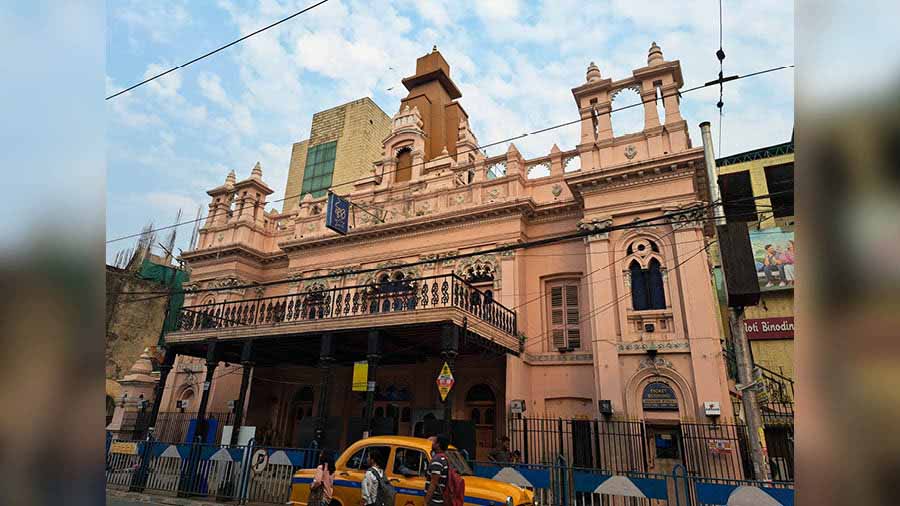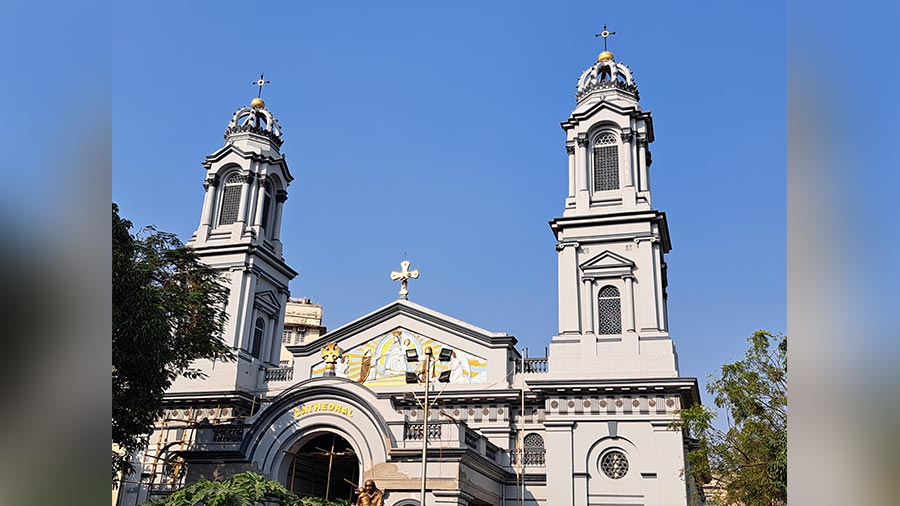More than 94 years ago, a sharp, physically strong and academically brilliant young woman of 21 years who had graduated from Calcutta’s Bethune College with flying colors and had a job of the headmistress of Nandankanan English Medium school in Chittagong (in undivided Bengal, now in Bangladesh) came under the lookout list of British police for waging war against the King.
Her association and direct involvement with an anti-British revolutionary organisation named Indian Republican Army (IRA) established by Surya Sen, a math teacher of National High School of Chittagong, surfaced in the coastal land of Bengal as one of the fugitives with Sen himself. Noone in those times ever expected that such an academically qualified and financially sound young lady will choose such a painstaking life for the sake of her motherland – she was Pritilata Wadeddar a daughter of Bengal, who was born to get a place next to Rani Lakshmibai of Jhansi in the history of India’s freedom struggle.
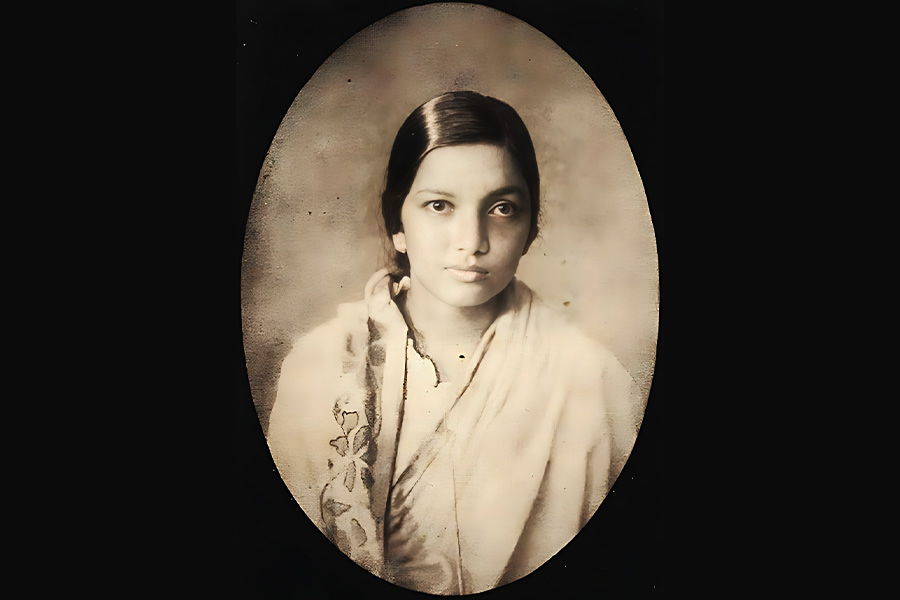
Indian Republican Army member Kalpana Dutta
April 18, 1930 – The daring armoury raid of Chittagong by Surya Sen and his brave young army rocked entire India but in reality, derived limited success. Lack of proper planning, information and experience finally reduced the brave expedition into a very limited achievement. The gang that raised two arsenal of British police was not even aware of this fact that guns and its usable muskets, bullets etc are never kept in the same warehouse. Thus, the actual objective of collecting huge arms did not materialise.
On the same day, another gang of ‘Masterda’ raided an European organisation with an objective to capture a large number of Europeans as hostage to negotiate tough with the British also failed pathetically. When revolutionaries of the Indian Republican Army attacked an Europeans-only club in Chittagong’s Pahartoli area, they found the club near empty as it was Good Friday and all members were at home.
Thus, only with few usable ammunition and disconnecting telephone, telegraph, electricity, etc, Masterda and his gang moved to the forest of Jalalabad hills, where on April 22, 1930, a gory gunbattle saw many brave Indians perish but Masterda, Ganesh Ghosh, Ananta Sinha and Nirmal Sen managed to flee.
In the next two years or so, Masterda stayed underground and managed to organise many daring attacks on the British, which kept the British police in Chittagong on their toes to be on his trail.
Though no woman member directly participated in the 1930 Chittagong armoury raid, Surya Sen’s group had an excellent back-up team of girls whom he directly led. Names like Kamala Dasgupta, Kalpana Dutta, Sabitri Devi, Kundaprabha Sengupta, Kumudini Rakshit, Nalini Pal, Sarojini Pal, Nirupama Barua, Nirmala Chakraborty and Suhasini Ganguly were some of the bright flames of the women’s squad of the Indian Republican Army.
The brightest of all those was Pritilata, then headmistress of an English-medium school.
Her connection with IRA was forged when she was studying in Calcutta and the records show that under incognito she went to Alipore Jail to meet Ramkrishna Biswas, a revolutionary sentenced to death, at least 40 times.
While being underground and running from one village to another for shelter, ‘Masterda’ again contacted Pritilata and on June 13, 1932, when they all were at a secret shelter of Dhalghat, a big force of police encircled them. On that night, during a gunbattle, Captain Cameroon of the British police was shot to death by Nirmal Sen but he and Apurba Sen both were killed. A teary Pritilata crossed the bloodied body of Nirmal Sen and fled with Surya Sen into the darkness – her life on the run for her motherland started from that day.
The failure of the European club attack mission in April 1930 created a deep vacillation in the heart of Surya Sen and he was restless to re-execute the plan.
On August 10, 1932, he again planned to attack the European club once again through one of his followers, Saileshwar Chakroborty, but this plan too was foiled at the last moment.

‘Masterda’ became adamant and he planned a third attack. While staying underground in a village called Kattoli, he called a secret meeting on September 18, 1932, with Pritilata, Bireshwar Roy, Tarakeshwar Dastidar, etc. Kalpana Dutta and Rajat Sen were also supposed to attend the meeting but both of them while crossing Chittagong town were arrested.
Bireshwar Roy, who was a participant of this meeting and survived many years after this, in an interview with Arup Ray in 1982 gave vivid details of that night.
There were two European clubs in Chittagong in those days. One was in Paltoon Bazar and another was in Pahartali. The official name of Pahartali club was Assam Bengal Railway European Institute, an all-European club where Anglo-Indians were also allowed. This club was targeted by ‘Masterda’.
According to Bireshwar Roy, it was clearly decided that this time, the attack will be led by Pritilata. ‘Masterda’ chalked out the plan himself and divided the gang into three groups executing attack from three different corners.
It was decided that attack would be on September 24 after 9.30pm and a Bengali employee of the club named Jogesh Majumdar will signal the revolutionaries for the apt time.
‘Masterda’ decided that one group comprising Bireshwar Roy, Prafulla Das and Panna Sen with bombs and pistols will attack the billiards room, while another small group with Pritilata, Kalikinkar Dey and Shanti Chakraborty will directly bomb the ballroom of the club. At the same time, another group will hurl bombs and fire through open windows and doors. This group will be formed by Sunil Dey and Mahendra Chowdhury.
All male members would wear typical Muslim attire of lungi, shirt and skull cap so that it does not create much doubt among patrolling police. Only Pritilata will be in the garb of a man with dhoti, shirt and turban. After the meeting on the same night, Surya Sen moved to another secret shelter in Battali.
On the day of attack, Pritilata met ‘Masterda’ at Gairala village and shocked him by expressing her desire to commit suicide after the mission was executed. Surya Sen was not ready to hear it and he was initially reluctant of sanctioning such a grave step planned by her one of the brightest commanders. His pain and pangs to approve such request is well described in the book named Chittagong Armoury Raiders: Reminiscences by Kalpana Dutta.
The book published in 1945 says that knowing Pritilata’s decision, Surya Sen said that “…….I don’t believe in suicide. But she forced potassium cyanide out of me, when she come to bid her last farewell. She was so eager and argued so well about its need in case she was trapped. I could not hold out. I gave it to her.”
So it is very clear that Priti practically snatched the poison from her mentor with a determined plan to kill herself after the action.
It is not clear at what time the action started but it was between 9.30pm and 10.30pm when the Railway Institute was booming with music, song, dance, booze, various indoor games and dinner. There were nearly 50 people of all highly placed Europeans and Anglo-Indians in the various rooms of the institute.
An indoor game called Whist Game was in progress, when the first bomb was tossed into the billiards room. Almost at the same time, the ballroom was attacked with blind firing of gunshots and bombs without giving any warning to anyone.
In the extreme noise, smoke and sparks of firing and smell of gunpowder, the din culminated. People excoriated in blood and suffocated by smoke ran aimlessly for cover causing more injury to each other in the bustle.
However, once the shockwave was over, the Europeans also fired back at the attackers. The attack continued for more than 10-15 minutes and it ravaged the entire club house with so much of devastation that on September 27, 1932, The Statesman wrote – “The raid was carried out with lighting-like rapidity and in almost perfect synchronization”.
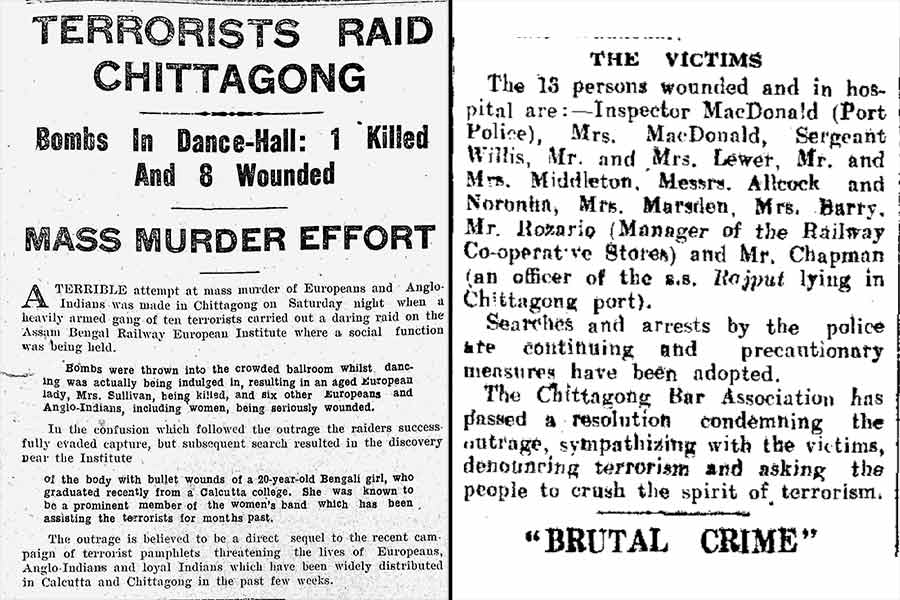
Reports that appeared in the ‘The Englishman’ on Sept 26, 1932, and in ‘The Statesman’ on Sept 27, 1932
How many Europeans were killed in this attack? Bireshwar Roy has written that they had killed 13 people and injured 11 to take revenge of the Jallianwalabagh massacre. This is a baseless surmise and no historical record supports Roy’s claim.
The reality is only an elderly lady named, Mrs Sullivan, was killed after being shot on the back. However, more than 11 people were badly injured. Some of those were inspector MacDonald of Port police and his wife, Sergeant Wills, Mr & Mrs Lewer, Mr & Mrs Middleton, Mrs Marsden, Mrs Barry, Mr Rozario of the Railway Cooperative Society, Mr Chapman, an officer of the ship named SS Rajput that had anchored at Chittagong port. All of them were promptly moved to Railway Cottage Hospital.
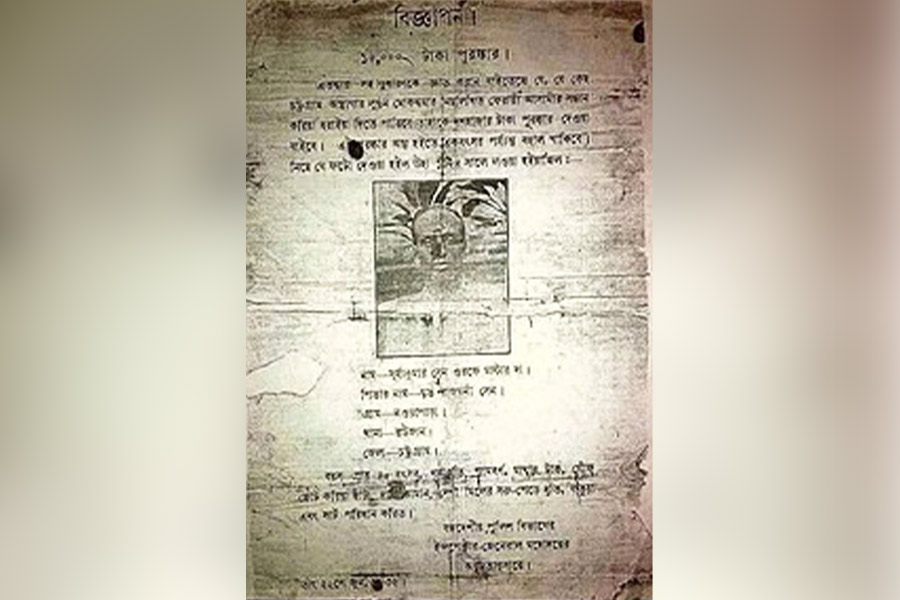
A lookout notice for Surya Sen offering an enormous prize money
The club was ravaged and muskets, cartridges, unexploded bombs were found all over. The floor and walls were badly damaged too.
When action was over, Pritilata blew her whistle to clear all her team members from the action spot but did not move from the spot herself. Next day, her body was found few yards from the club house. It was found that she had consumed poison.
With this, Pritilata cemented her name in the annals of history just next to Rani Lakshmibai of Jhansi by becoming the only female freedom fighter after her to die on the battlefield while taking part in a military action. The daughter of Bengal achieved immortality.
The Liberty newspaper reported that Pritilata was shot on her breast. The Englishman newspaper described here as ‘Girl Terrorist’ and mentioned bullet wounds found on her body. The London-based The Courier & Advertiser on September 26, 1932, wrote that Pritilata’s body was ‘riddled with bullets’.
The report in The Statesman on September 27 in bold headline read ‘Mass Murder Attempt by Terrorist – One Killed And 14 Injured In Chittagong Attack’ and also mentioned ‘Woman Raiders Death From Poisoning’. The Statesman did not mention that Pritilata’s body had any bullet wounds. Surprisingly, her post-mortem report also mentioned no bullet mark on her body and the cause of death was mentioned as poisoning.
The event was widely reported all over India and abroad indicating it one of the most obnoxious attacks on innocents by terrorists in the name of nationalistic movement.
Just on the day of attack, provocative revolutionary pamphlets were distributed in Chittagong and Calcutta giving an open call to join IRA to kill all Europeans, Anglo-Indians and other white-skinned for the sake of freedom.
This aimless brutality of killing attitude was strongly castigated again by The Statesman on September 30, 1932, in an editorial that read ‘Terrorism is not aimed at European Government but at society: It will not disappear when the alien authority vanishes’.
Before going to action on that day, Pritilata wrote a self-declaration kind of piece in Bengali and kept it at her home. Later, police found it from her house and that was used against her in court.
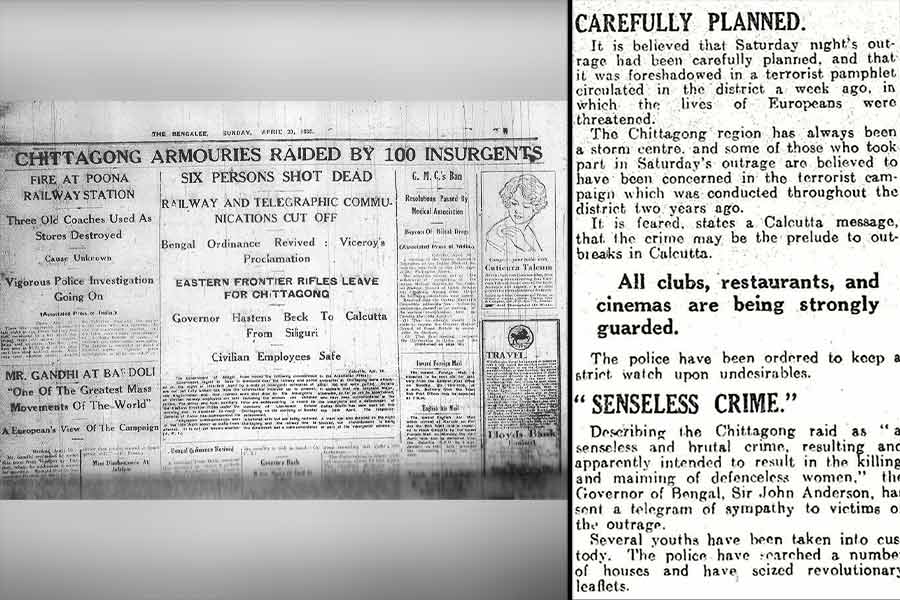
Reports that appeared in ‘The Bengalee’ on April 20, 1930, and in ‘The Courier & Advertiser’ on Sept 26, 1932
In that self-declaratory note, she wrote that she was an active member of IRA. She wrote to break the myth that for the sake of breaking the shackle of slavery, a woman raised in this sub-continental ideology can ruthlessly kill enemy. She questioned why girls of this country will not be allowed to fight against colonial rulers.
From her dead body, police recovered papers with action plan, leaflets, revolver with bullets, a whistle and a photo of Ramkrishna Biswas.
Now, the question is why Pritilata intentionally killed her when she had good chance to escape on that night? Was she losing the charm of living after the death of Nirmal Sen with whom her emotional relation was not unknown.
In a report sent to London by the detective department of Bengal, Pritilata was even mentioned by the wife of Nirmal Sen, while The Englishman clearly wrote that Nirmal Sen was her lover. Kalpana Dutta in her book also has given soft hints that she had a weakness towards Nirmal Sen and all these assumptions had a small foundation.
On June 13, 1932, from the room of Nirmal Sen, a book of Leon Trotsky was found and inside of that a photograph of a girl was found. The same photo was found from the pocket of Nirmal Sen’s dead body.
Both photographs were of Pritilata.
